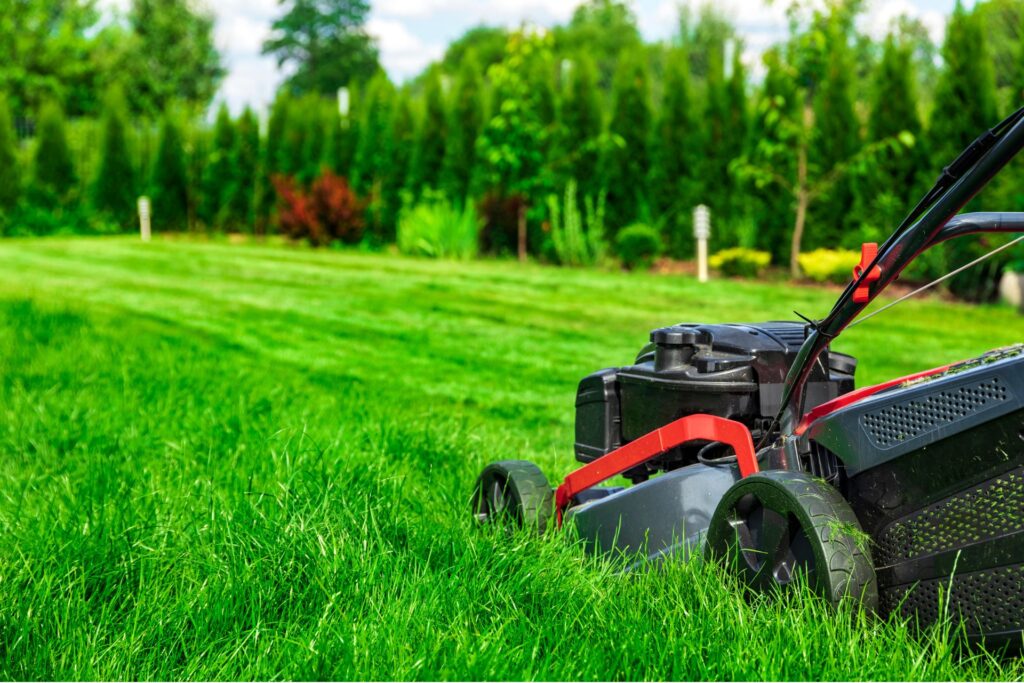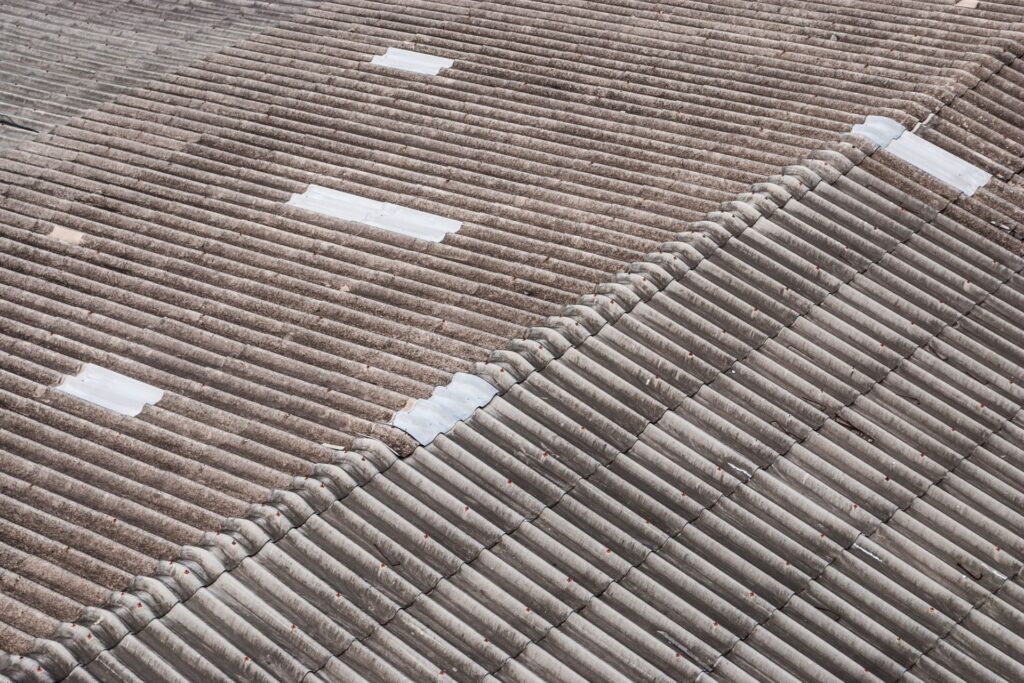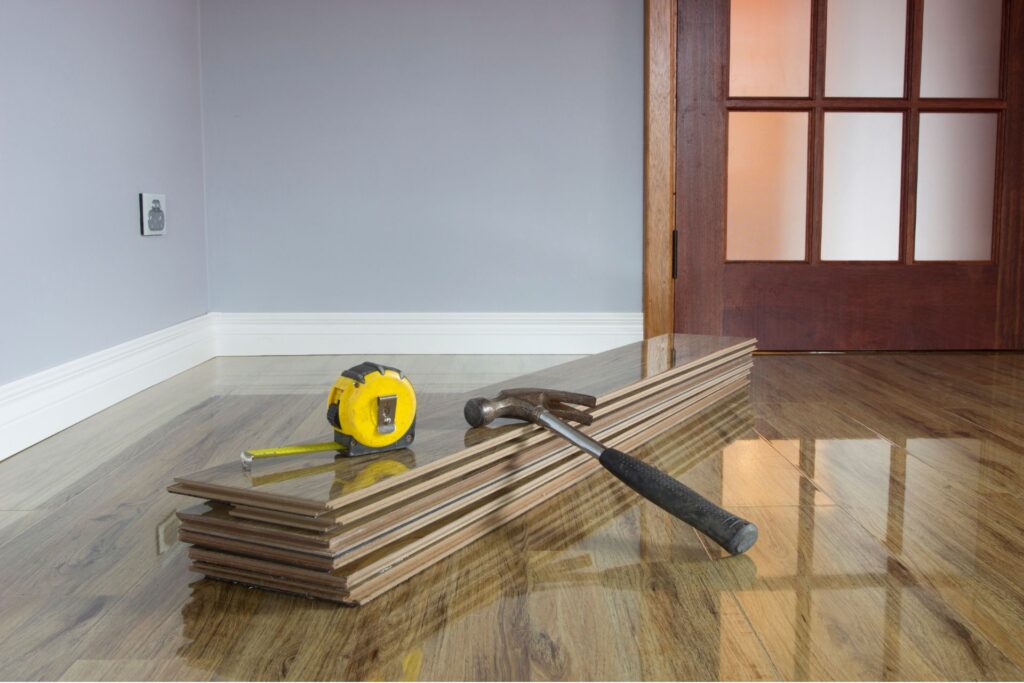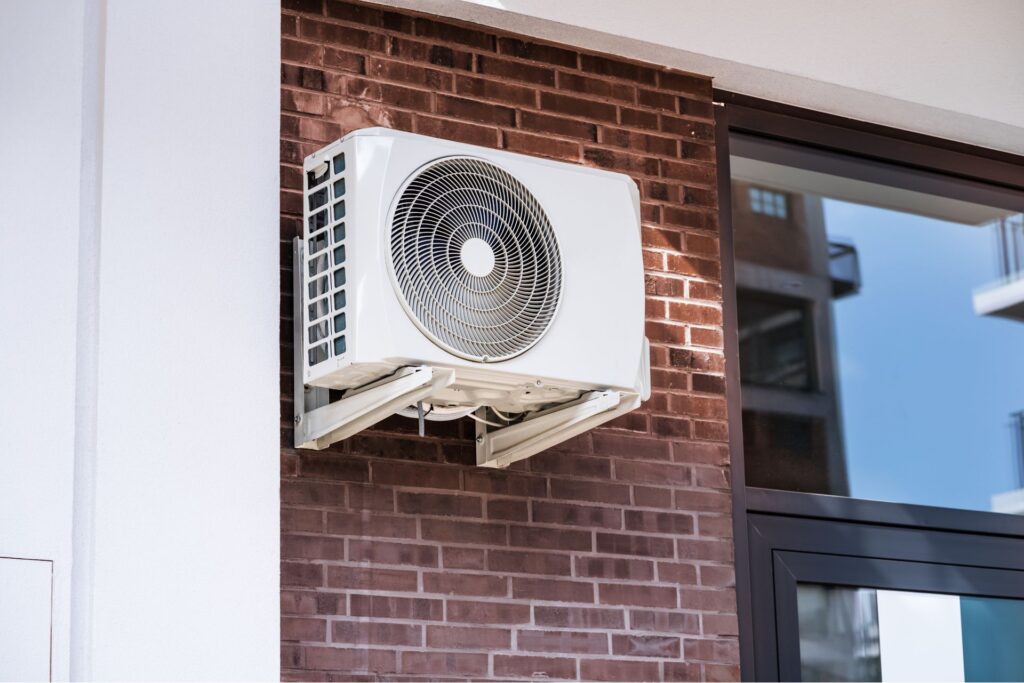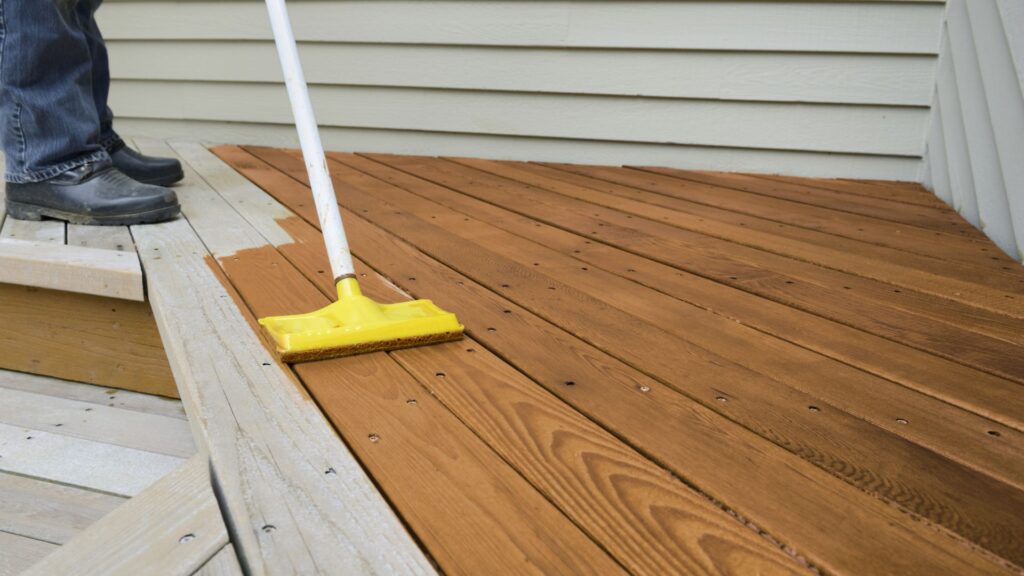Welcome to your comprehensive guide on how to build a driveway gate! If you’re looking to enhance your home’s security, boost curb appeal, or simply add a touch of privacy, installing a driveway gate is a fantastic DIY project that can achieve all these goals. In this step-by-step guide, we’ll walk you through everything you need to know, from planning and gathering materials to building, installing, and maintaining your gate. Whether you’re a seasoned DIY enthusiast or just getting started, this guide will equip you with the knowledge and confidence to tackle the project with ease. Let’s get started on creating a beautiful, functional driveway gate that not only protects your property but also elevates the overall look of your home.
To build a driveway gate, start by planning the design, measuring the space, and choosing the right materials. Next, gather essential tools like a tape measure, saw, and concrete mix. Construct the gate frame, install sturdy posts, and attach the gate securely using hinges. Finally, add finishing touches like a latch or lock, and paint or stain the gate for durability and style. Regular maintenance will keep your gate functional and looking great for years.
Planning Your Driveway Gate
Planning a driveway gate is a critical aspect of enhancing your home’s security, privacy, and curb appeal. Whether you’re thinking about adding a gate for the first time or upgrading an existing one, careful consideration is key to making the right choices. This guide will walk you through the essential steps of planning your driveway gate, ensuring you make informed decisions that align with your needs and budget.
Assessing Your Driveway Gate Needs
The first step in planning your driveway gate is to assess your specific needs. Understanding the different types of gates available and the factors that will influence your choice is crucial.
Types of Driveway Gates: Swing vs. Sliding
Driveway gates come in two primary styles: swing and sliding. A swing gate operates like a door, opening inward or outward on hinges. These gates are generally more aesthetic and are ideal for flat driveways with ample space. On the other hand, a sliding gate moves horizontally along a track, making it a better choice for properties with limited space or driveways that slope. Sliding gates are often preferred for their space-saving design and are typically more secure.
Key Considerations: Space, Budget, Material, and Automation
When choosing between a swing or sliding gate, consider the following:
- Space Available: Measure your driveway carefully to determine whether you have enough room for a swing gate or if a sliding gate is more practical.
- Budget: Your budget will dictate the type of gate you can afford. Remember to factor in not just the cost of the gate itself but also installation, automation, and maintenance.
- Gate Material: Driveway gates are commonly made from wood, metal, or vinyl. Each material offers distinct advantages in terms of appearance, durability, and maintenance requirements.
- Manual vs. Automatic: Decide whether you want a manual gate or an automatic one. While automatic gates are more convenient, they come at a higher cost and require more maintenance.
Measuring the Space for Your Driveway Gate
Accurate measurements are crucial to ensuring your gate fits perfectly and functions smoothly. Here’s how to measure your space effectively:
Step-by-Step Guide to Measuring Your Driveway
1. Measure the Width: Start by measuring the total width of your driveway at the point where you plan to install the gate. Measure at ground level for the most accurate reading. If you’re considering a swing gate, ensure there’s enough room for the gate to open fully without obstruction.
2. Measure the Height: Decide on the desired height for your gate, which should balance security with aesthetics. Taller gates offer more privacy and security, but may also require more substantial posts and hinges.
3. Consider the Driveway Slope: If your driveway slopes, it’s essential to account for this when planning your gate. For swing gates, a slope can interfere with the gate’s ability to open fully. Sliding gates may require additional grading or a custom track to accommodate the incline.
4. Check Clearance Requirements: Ensure that your gate has enough clearance from the ground to avoid scraping, especially if your driveway is uneven or prone to frost heave.
Choosing the Right Materials for Your Driveway Gate
Selecting the right material for your driveway gate is just as important as the design. The material you choose will affect the gate’s durability, maintenance needs, and overall appearance.
Comparison of Common Materials: Wood, Metal, Vinyl
- Wood: Wooden gates are classic and offer a warm, natural look. They can be painted or stained to match your home’s exterior. However, wood requires regular maintenance to prevent rot, warping, and insect damage. It’s also less durable than metal but can be a cost-effective option for decorative gates.
- Metal: Metal gates, such as wrought iron or aluminum, are highly durable and offer a more imposing look. Wrought iron is known for its strength and intricate designs, but it can be prone to rust if not properly maintained. Aluminum, on the other hand, is lightweight and rust-resistant, making it a low-maintenance option.
- Vinyl: Vinyl gates are an excellent choice for homeowners seeking a low-maintenance option. Vinyl is resistant to weathering, doesn’t require painting, and can mimic the look of wood without the associated upkeep. However, it may not be as strong as wood or metal and can be more expensive upfront.
Tips for Selecting Quality Materials
To ensure your driveway gate stands the test of time, consider the following:
- Durability: Choose materials known for their long-lasting qualities. For example, opt for treated wood or powder-coated metal to resist weathering and corrosion.
- Maintenance: Factor in how much time and money you’re willing to spend on upkeep. Wood may need yearly treatment, while vinyl and metal are generally easier to maintain.
- Cost vs. Value: While budget is a concern, investing in higher-quality materials can save money in the long run by reducing the need for repairs or replacement.
Planning your driveway gate involves careful consideration of your specific needs, precise measurements, and a thoughtful selection of materials. By assessing your space, budget, and desired features, you can choose a gate that enhances your property’s security and aesthetics while fitting your lifestyle. Whether you prefer the timeless elegance of wood, the strength of metal, or the low maintenance of vinyl, the right driveway gate will be a valuable addition to your home for years to come.

Gathering Tools And Materials
When embarking on a DIY project, especially one as important as building a gate, it’s crucial to have all the right tools and materials at your disposal. Preparing in advance not only saves time but also ensures your project runs smoothly from start to finish. Below, we’ll guide you through everything you need to get started.
Essential Tools You’ll Need
To achieve professional results, having the right tools is non-negotiable. Here’s a list of essential tools you’ll need:
- Tape Measure: Precision is key. A good tape measure ensures you get your measurements right, reducing the risk of errors that could compromise your project.
- Post-Hole Digger: Setting sturdy posts is the foundation of a durable gate. A post-hole digger makes this task easier, allowing you to dig deep, uniform holes for the posts.
- Level: Nothing ruins a project faster than a gate that doesn’t hang straight. A level helps you achieve a perfectly aligned structure, ensuring both aesthetics and functionality.
- Drill: From securing screws to making pilot holes, a reliable drill is a must. Opt for one with variable speeds to handle different materials with ease.
- Saw: Whether you’re cutting posts to size or trimming panels, a saw will be your go-to tool. Depending on your material, you may need a handsaw, circular saw, or miter saw.
- Concrete Mix: Your posts need a solid foundation. Concrete mix provides the stability required for a long-lasting gate.
In addition to these essentials, consider having some specialized tools on hand. While not absolutely necessary, items like a post level (which levels posts on multiple planes) or a quick-grip clamp can streamline the process and improve your overall efficiency.
Sourcing Your Materials
Once you’ve gathered your tools, it’s time to source the materials for your project. The quality of your materials will significantly impact the durability and appearance of your gate, so choose wisely.
- Where to Buy Materials: Local hardware stores are often the best places to start. They offer the advantage of seeing materials in person, which helps you assess quality before purchasing. Many stores also have knowledgeable staff who can offer advice based on your specific needs. Alternatively, online retailers can provide a broader selection and the convenience of home delivery, especially for heavier items like lumber or pre-fabricated panels.
- Pre-Made Gate Kits vs. Building from Scratch: If you’re new to DIY or pressed for time, pre-made gate kits are a great option. They come with all the necessary components and detailed instructions, taking much of the guesswork out of the project. On the other hand, building from scratch gives you full control over design and material quality, allowing for a custom finish that matches your exact specifications.
- Budgeting for Your Project: It’s easy to get carried away when buying materials, but setting a budget will help keep costs in check. Start by listing all required materials and tools, then compare prices across different suppliers. Consider buying in bulk where possible, and don’t shy away from using discount codes or seasonal sales. However, remember that compromising on quality to save money can lead to higher costs in the long run, as cheaper materials may need more frequent repairs or replacement.
By carefully selecting your tools and materials and planning your purchases, you’ll set the stage for a successful project. Proper preparation is the first step toward creating a gate that not only looks great but stands the test of time.
Gathering the right tools and materials is a critical phase of any DIY project. With the proper equipment and quality materials, you’ll be well-equipped to build a gate that is both functional and attractive. Whether you’re buying from a local hardware store or online, taking the time to research and plan will pay off in the long run, ensuring that your project is both cost-effective and built to last.

Building The Gate Frame
Building a gate is a rewarding DIY project that adds both functionality and aesthetic appeal to your property. Whether you’re working with wood or metal, constructing a strong and durable gate frame is essential. In this guide, we’ll walk you through the process, providing detailed instructions and expert tips to ensure your gate stands the test of time.
Step 1: Constructing the Frame
The first and most crucial step in building a gate is constructing the frame. A well-built frame is the foundation of a strong gate, ensuring it remains square, level, and durable for years to come.
1. Selecting the Materials
Choose high-quality wood or metal for the frame. For wooden gates, hardwoods like cedar or redwood are ideal due to their resistance to decay. If you opt for metal, galvanized steel or aluminum are excellent choices for durability and rust resistance.
2. Measuring and Cutting
Begin by measuring the opening where the gate will be installed. Subtract a small margin (around 1/4 inch) to allow for smooth operation. Use these measurements to cut the frame pieces accurately. For a wooden frame, a circular saw or a handsaw works well, while a metal-cutting saw is required for metal frames.
3. Assembling the Frame
- Lay out the cut pieces on a flat surface to form a rectangle or square, depending on your gate’s design. Ensure the corners are perfectly square by measuring diagonally from corner to corner; both measurements should be equal.
- Use strong, weather-resistant fasteners like exterior-grade screws or welding (for metal frames) to join the pieces. Reinforce the corners with metal brackets or additional screws to enhance stability.
4. Ensuring Squareness and Level
Before finalizing the assembly, double-check that the frame is square by measuring diagonally again. Adjust as necessary. Place a level across the top and sides to ensure the frame is perfectly horizontal and vertical.
Step 2: Attaching the Gate Panels
Once the frame is constructed, the next step is to attach the gate panels. The panels not only provide privacy and security but also contribute to the overall look of your gate.
1. Securing the Panels
- If you’re using wood panels, align them with the frame, starting from one side and working across. Use weather-resistant screws or nails to attach each panel securely to the frame. For metal gates, panels can be welded or bolted in place.
- Maintain consistent spacing between the panels, if applicable, to create an even, aesthetically pleasing appearance.
2. Incorporating Decorative Elements
- Personalize your gate by adding decorative elements such as lattice, carved designs, or ornamental metalwork. These can be attached to the panels before or after installation, depending on your design.
- Consider painting or staining the panels before installation to protect the wood or metal and enhance its appearance.
Step 3: Adding Support Bracing
Support bracing is essential to prevent the gate from sagging over time. Properly placed bracing ensures that your gate remains stable, even under heavy use.
1. Understanding the Importance of Bracing
Bracing helps distribute the weight of the gate evenly across the frame, reducing stress on the hinges and preventing the gate from warping or sagging.
2. Choosing the Right Bracing
- Diagonal bracing is the most effective type for gate frames. For wooden gates, use sturdy, weather-resistant lumber for the brace. Metal gates can use flat steel bars or rods.
- Position the brace from the bottom hinge corner to the opposite top corner. This placement counteracts the natural downward force that causes gates to sag.
3. Installing the Bracing
- Attach the brace securely to the frame using strong fasteners. For wood, use long screws or bolts that penetrate deeply into the frame. Weld or bolt metal braces into place.
- Double-check that the brace is tight and properly aligned before finalizing the installation. The brace should fit snugly against the frame without gaps.
Building a gate frame involves careful planning and precision, but with the right approach, you can create a structure that’s both functional and beautiful. By following these steps and paying attention to detail, you’ll ensure your gate remains sturdy, secure, and visually appealing for years to come. Whether you’re adding a rustic wooden gate to a garden or a sleek metal gate to a driveway, the key to success lies in constructing a solid frame, securely attaching the panels, and incorporating effective bracing.

Installing The Gate Posts
When it comes to installing a gate, setting the posts is one of the most crucial steps. Proper installation ensures the stability and longevity of your gate, preventing it from sagging or shifting over time. In this guide, we’ll walk you through the process of installing gate posts, from digging the holes to setting them securely in concrete.
Step 1: Digging Post Holes
The first step in installing your gate posts is to dig the post holes. This may seem straightforward, but it’s essential to get it right to avoid future issues. Here’s how to do it:
1. Mark the Locations
Begin by marking the exact locations where the posts will be installed. Use a string line and stakes to ensure the posts are aligned correctly. Measure the distance between the posts to match the width of your gate, allowing a small gap for smooth operation.
2. Determine Hole Depth and Width
The depth and width of the holes depend on the height and material of your gate. As a rule of thumb, the hole should be about one-third the height of the post above ground. For example, if your post is 6 feet tall, the hole should be at least 2 feet deep. The diameter of the hole should be about three times the width of the post. This extra space allows for a solid concrete footing around the post.
3. Dig the Holes
Use a post hole digger or an auger to dig the holes to the required depth and width. Ensure the bottom of each hole is flat and free of loose soil, which can cause settling over time. For additional stability, consider adding a few inches of gravel at the bottom to aid drainage and prevent water from collecting around the base of the post.
Step 2: Setting the Posts
Once your holes are ready, it’s time to set the posts. Proper alignment and secure anchoring are critical to ensure your gate functions smoothly and lasts for years.
1. Position the Posts
Place the posts into the holes, starting with one and then moving to the other. Use a level to ensure the posts are plumb (vertically straight). This step is vital because even a slight tilt can cause your gate to misalign or drag.
2. Align the Posts
Align the posts with the string line you set earlier. Double-check the spacing between the posts to ensure it matches the width of your gate. Adjust the position of the posts as needed before proceeding to the next step.
3. Secure the Posts with Concrete
Mix your concrete according to the manufacturer’s instructions, typically a 4:1 ratio of concrete to water. Pour the concrete into the hole around the post, filling it to ground level. As you pour, use a shovel or stick to work the concrete around the post, eliminating air pockets that could weaken the bond.
4. Check for Plumb and Level
After pouring the concrete, recheck the post’s alignment. Ensure it is still plumb and correctly aligned with the string line. Make any necessary adjustments before the concrete begins to set. It’s important to act quickly, as the concrete will start to harden within minutes.
5. Let the Concrete Cure
Allow the concrete to cure for at least 24 to 48 hours before attaching the gate. This curing time ensures the posts are securely anchored and can bear the weight of the gate without shifting. During this time, avoid disturbing the posts to ensure they remain perfectly aligned.
Final Thoughts
Installing gate posts may seem daunting, but with careful preparation and attention to detail, you can achieve a professional result. By following these steps—digging precise holes, setting the posts correctly, and securing them with concrete—you’ll create a strong foundation that will keep your gate functioning smoothly for years to come. Whether you’re building a fence gate, driveway gate, or garden gate, the success of your project hinges on this foundational step.

Hanging The Gate
Hanging a gate is a crucial step that requires precision and care to ensure the gate functions properly and lasts for years. In this section, we’ll walk you through the process of attaching hinges and mounting your gate, focusing on essential details to ensure a smooth and efficient installation.
1. Attaching Hinges: Choosing and Installing the Right Hinges
Choosing the Right Hinges
The first step in hanging a gate is selecting the appropriate hinges. The type of hinges you choose depends on both the material and weight of your gate. For example, a heavy wooden or metal gate requires sturdy, robust hinges, such as strap hinges or heavy-duty butt hinges. In contrast, a lighter gate made of vinyl or composite material can be adequately supported with standard tee hinges. Ensuring that your hinges are corrosion-resistant, particularly for outdoor gates, will also help in maintaining longevity and reducing maintenance needs.
Step-by-Step Guide to Attaching Hinges
1. Position the Hinges: Start by deciding where to place the hinges on the gate. Typically, one hinge is positioned approximately 6 to 12 inches from the top, and another 6 to 12 inches from the bottom of the gate. If the gate is particularly tall or heavy, consider adding a third hinge in the center for additional support.
2. Mark the Screw Holes: Hold the hinge against the gate and use a pencil to mark the screw hole positions. Double-check the alignment to ensure that the gate will hang evenly without tilting.
3. Pre-Drill the Holes: Pre-drilling pilot holes for the screws is essential, especially in hardwood gates, to prevent splitting. Use a drill bit slightly smaller than your screws.
4. Attach the Hinges: Secure the hinges to the gate using appropriate screws. Ensure the screws are fully tightened to prevent any movement that could cause misalignment over time.
Ensuring Even Spacing and Alignment
Achieving proper spacing and alignment is vital to prevent the gate from sagging. After attaching the hinges to the gate, it’s important to verify that they are perfectly aligned. Any misalignment can cause the gate to bind, sag, or not close properly. Use a level to check both the horizontal and vertical alignment of the gate. Even a slight deviation can lead to operational issues down the road.
2. Mounting the Gate: Positioning and Final Adjustments
Lifting and Positioning the Gate
Mounting the gate is a two-person job, especially for heavier gates. Begin by lifting the gate into position. It’s essential to have one person hold the gate steady while the other works on securing it. If the gate is particularly heavy, consider using a jack or a block of wood to help lift and hold it in place while you attach it to the posts.
Balancing and Checking for Smooth Operation
Once the gate is in position, insert the hinge pins or bolts and check for balance. The gate should hang evenly without tilting to one side. Open and close the gate several times to ensure it swings smoothly without catching or dragging on the ground. If the gate doesn’t operate smoothly, this may be due to uneven ground or misaligned hinges, both of which need to be addressed immediately.
Adjusting Hinges for Optimal Performance
If you find that the gate doesn’t swing or slide properly, adjustments may be necessary. Most hinge systems allow for slight modifications. Loosen the screws slightly and realign the gate as needed. For gates that swing, check the swing path and ensure there are no obstructions. For sliding gates, ensure the track is clear and that the gate rolls effortlessly. After adjustments, re-tighten all screws and bolts to secure the hinges in their final position.
Final Thoughts
Hanging a gate is more than just attaching hinges and hoping for the best. By carefully selecting the right hinges, ensuring proper alignment, and making necessary adjustments, you can prevent common issues like sagging or improper operation. Taking the time to follow these detailed steps will ensure that your gate not only looks great but also functions smoothly for years to come.
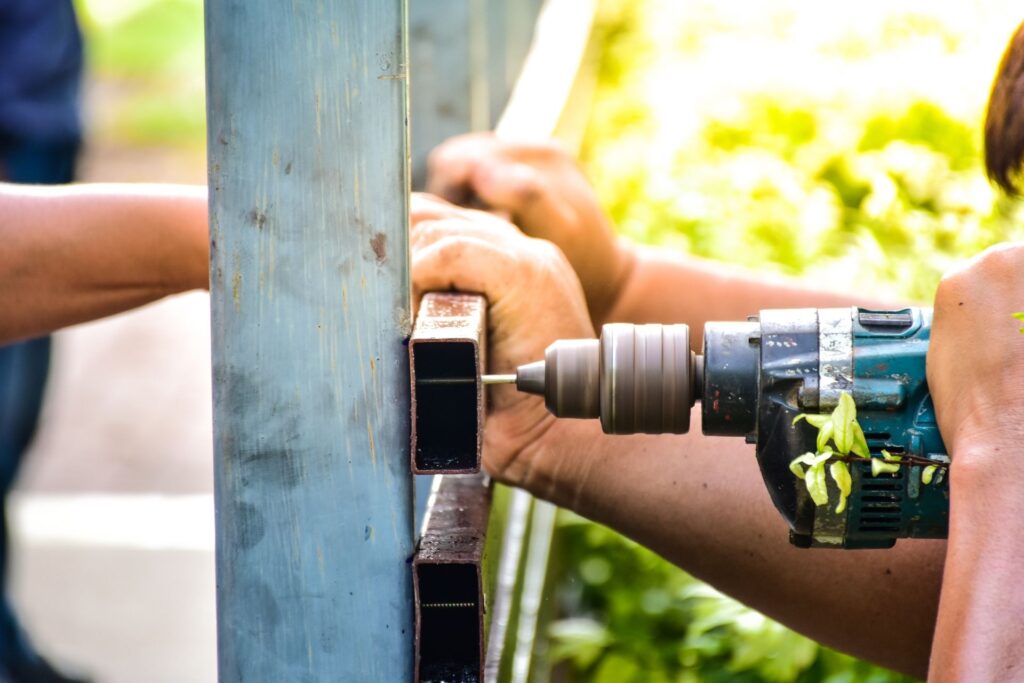
Adding Finishing Touches
After investing time and effort into constructing your driveway gate, adding the finishing touches is essential to ensure functionality, durability, and aesthetic appeal. This final phase involves selecting the right latch or lock for security and adding a fresh coat of paint or stain to protect and enhance the gate’s appearance. Below, we dive deep into the steps you should take to complete your driveway gate project like a pro.
1. Installing a Latch or Lock
Security is paramount when it comes to your driveway gate. Choosing the right latch or lock can provide the necessary protection and convenience. Here’s how to select and install the perfect one:
- Types of Latches and Locks: There are several types of latches and locks suitable for driveway gates. The choice depends on your specific needs, budget, and the gate’s design. Common options include:
- Slide Bolt Latches: These are simple, manual locks that are easy to install and operate.
- Gravity Latches: Often self-closing, these latches use gravity to secure the gate automatically when it closes.
- Deadbolt Locks: For added security, especially for metal or wooden gates, a deadbolt lock offers a sturdy, reliable option.
- Electric or Magnetic Locks: Ideal for gates with automatic openers, these locks provide high security and can be operated remotely.
Installation Instructions
- Begin by choosing a latch or lock that fits your gate’s material—wood, metal, or composite.
- Measure and mark the location where the latch or lock will be installed. Ensure it aligns perfectly with the gate frame for smooth operation.
- Drill the necessary holes for screws or bolts and securely attach the latch or lock.
- If you’re opting for an automatic opener, follow the manufacturer’s instructions for integrating the lock with the opener system.
Adding an Automatic Opener: If convenience is a priority, consider adding an automatic gate opener. This can be especially useful for larger gates. Automatic openers often come with built-in security features, including remote controls and keypad entry systems.
2. Painting or Staining the Gate
A well-painted or stained gate not only looks great but also stands up to the elements. Whether you choose to paint or stain, it’s crucial to select products that enhance the gate’s appearance and protect it from weather damage.
Selecting the Right Paint or Stain
- Paint: Opt for a high-quality, exterior-grade paint that complements your home’s color scheme. For wooden gates, look for paints with UV protection and mildew resistance. For metal gates, a rust-inhibiting paint is essential.
- Stain: If you prefer a natural look, stain is the way to go. Choose an exterior wood stain that highlights the wood grain while providing weather protection. For a long-lasting finish, consider a stain that includes a sealer.
Step-by-Step Application
1. Prep the Surface: Start by cleaning the gate thoroughly. Remove dirt, dust, and any old paint or stain. Sand the surface to create a smooth base for the new coat.
2. Priming: If painting, apply a primer suitable for the gate’s material. Priming helps the paint adhere better and provides an even finish.
3. Applying Paint or Stain: Using a brush, roller, or sprayer, apply the paint or stain evenly. For stains, work with the wood grain for the best results. If using paint, consider applying multiple thin coats for durability.
4. Sealing: After the paint or stain has dried, apply a sealant to protect against moisture, UV rays, and temperature changes. This step is crucial for prolonging the gate’s lifespan.
Regular Maintenance: To keep your gate looking fresh and functioning well, plan for regular maintenance. For painted gates, touch up any chips or scratches promptly. For stained gates, reapply stain and sealant every few years, depending on weather exposure.
Adding the finishing touches to your driveway gate is about more than just aesthetics. The right latch or lock enhances security, while proper painting or staining ensures longevity and complements your home’s exterior. By following these steps, you’ll complete your driveway gate project with confidence, knowing it’s both beautiful and built to last.
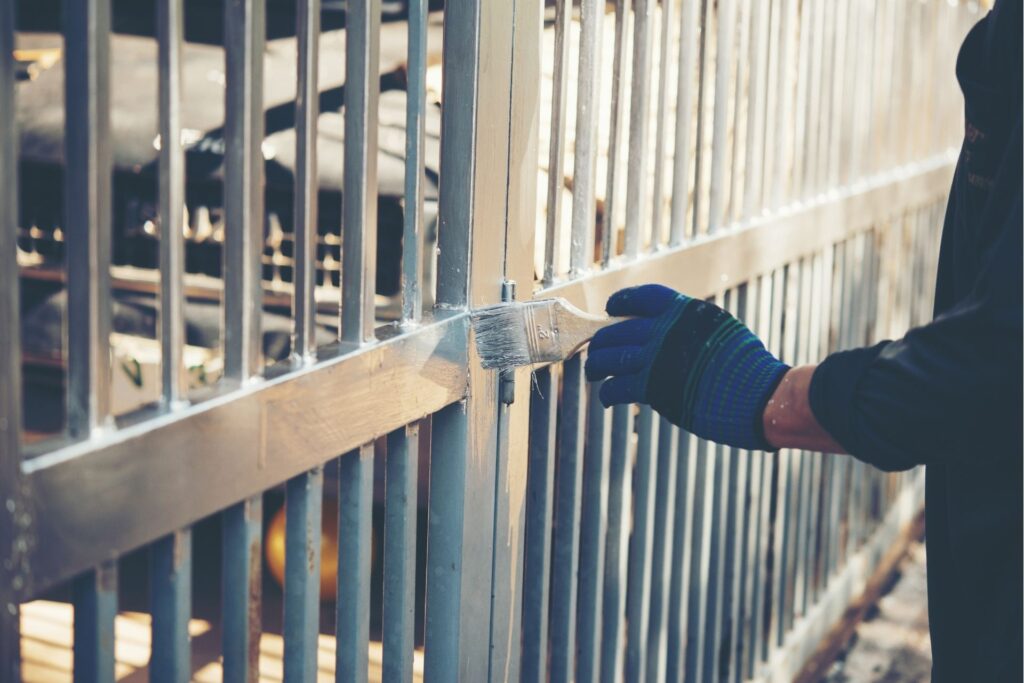
Maintenance Tips For Your Driveway Gate
A well-maintained driveway gate not only adds to the aesthetic appeal of your property but also ensures security and functionality over the years. Proper upkeep can extend the life of your gate, saving you time and money in the long run. In this section, we’ll cover essential maintenance tips that every homeowner should follow to keep their driveway gate in top condition.
1. Regular Inspections
Performing regular inspections is key to preventing small issues from turning into costly repairs. A thorough check-up at least once every few months can help you spot signs of wear and tear early. During your inspection, focus on the following areas:
- Hinges: Ensure that the hinges are secure and free of rust. Loose or rusted hinges can cause the gate to sag or become misaligned, leading to operational issues.
- Posts: Check the gate posts for any signs of instability or rot (for wooden posts). Posts that are leaning or rotting may indicate foundational problems that need immediate attention.
- Hardware: Inspect the latches, bolts, and other hardware for signs of rust, wear, or looseness. Tighten any loose screws and replace any worn-out parts to ensure the gate operates smoothly.
By staying on top of these inspections, you can catch potential problems early, ensuring your gate remains in good working order.
2. Cleaning and Upkeep
Cleaning your driveway gate regularly not only keeps it looking good but also prevents damage caused by environmental factors. Here’s how you can maintain your gate based on its material:
- Metal Gates: Metal gates are prone to rust if not properly cared for. Use a mild detergent and water to clean the surface, removing dirt, grime, and salt deposits that can lead to corrosion. After washing, dry the gate thoroughly and apply a protective wax or a rust inhibitor to safeguard against moisture.
- Wooden Gates: Wooden gates can suffer from rot and insect damage if not maintained properly. Clean the wood with a soft brush and a wood-safe cleaner. Avoid high-pressure washing, which can damage the wood fibers. After cleaning, inspect for any signs of rot or insect infestation and treat these areas promptly with a suitable wood preservative.
Taking these steps can prevent minor issues from escalating into major problems, ensuring your gate stays in excellent condition for years to come.
3. Repainting or Resealing
Over time, exposure to the elements can cause your gate’s finish to deteriorate. Repainting or resealing the gate not only enhances its appearance but also provides a protective barrier against weather damage. Here’s when and how to do it:
- When to Repaint or Reseal: If you notice peeling paint, fading color, or exposed wood/metal, it’s time to repaint or reseal. For wooden gates, resealing should be done every 2-3 years, while metal gates might need repainting every 4-5 years, depending on their exposure to the elements.
- How to Repaint or Reseal: Start by sanding down the surface to remove old paint or sealant. For metal gates, use a primer that prevents rust before applying the final coat of paint. For wooden gates, choose a high-quality exterior-grade sealant or paint. Ensure the gate is clean and dry before applying any new layers to achieve a smooth, long-lasting finish.
By following these maintenance tips, your driveway gate will not only look great but will also function effectively for many years. Regular inspections, proper cleaning, and timely repainting or resealing are simple yet crucial steps in protecting your investment. Make these practices a part of your routine, and your driveway gate will continue to welcome guests with style and security for decades.
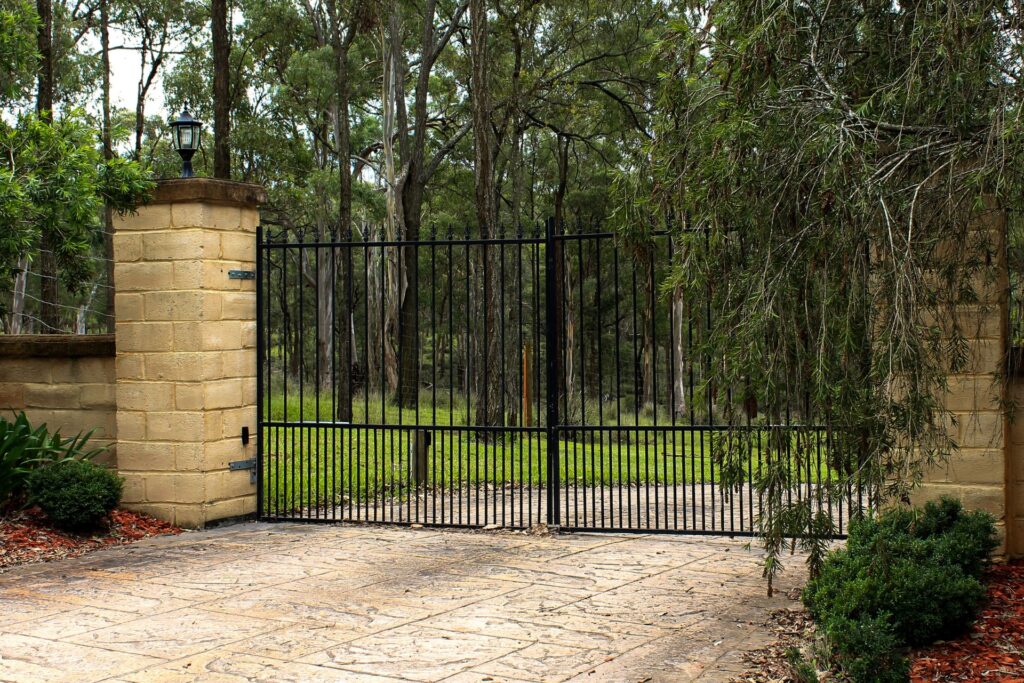
FAQs: About How To Build A Driveway Gate
Conclusion
Building a driveway gate is a rewarding project that any DIY enthusiast can achieve with careful planning and execution. By following the key steps—designing the gate, gathering the right materials, and properly installing it—you can create a functional and stylish addition to your property. As you embark on this project, remember that the most important step is simply getting started. Begin by planning your gate, then take action, and soon you’ll see your vision come to life. If you’ve completed a driveway gate or have questions along the way, we encourage you to share your experiences and ask for advice in the comments below.
Find A Professional Fencing Company Near You!
- Farm Fencing Waikato
- Fence Builders Alexandra, Clyde & Cromwell
- Fence Builders Auckland
- Fence Builders Central Otago
- Fence Builders Christchurch
- Fence Builders Hamilton Waikato
- Fence Builders Invercargill
- Fence Builders Kapiti
- Fence Builders Lower Hutt
- Fence Builders Manawatu
- Fence Builders Palmerston North
- Fence Builders Queenstown
- Fence Builders Taupo
- Fence Builders Upper Hutt
- Fence Builders Wanaka
- Fence Builders Wellington
- Fencing Contractors Levin
- Fencing Contractors Napier
- Fencing Hastings
- Fencing Hawkes Bay
- Fencing Kerikeri
- Fencing Mangawhai
- Fencing Nelson
- Fencing New Plymouth
- Fencing Paihia
- Fencing Taranaki, New Plymouth
- Fencing Warkworth
About the Author:
Mike Veail is a recognized digital marketing expert with over 6 years of experience in helping tradespeople and small businesses thrive online. A former quantity surveyor, Mike combines deep industry knowledge with hands-on expertise in SEO and Google Ads. His marketing strategies are tailored to the specific needs of the trades sector, helping businesses increase visibility and generate more leads through proven, ethical methods.
Mike has successfully partnered with numerous companies, establishing a track record of delivering measurable results. His work has been featured across various platforms that showcase his expertise in lead generation and online marketing for the trades sector.
Learn more about Mike's experience and services at https://theleadguy.online or follow him on social media:




